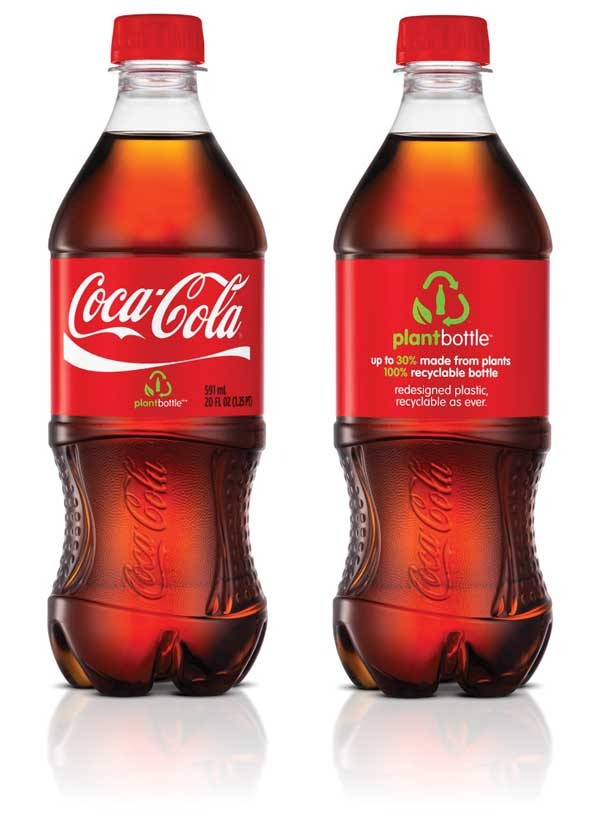Stepping Up to a Currency Molecule





May 12, 2015
BY Susanne Retka Schill
Biobased chemicals are two steps closer to the tipping point when the growing demand for sustainable products opens huge global markets for renewables. Last fall, DuPont announced a deal to sell its cellulosic ethanol to Proctor and Gamble to be used in laundry detergent. This spring, Croda Inc. broke ground on a $170 million upgrade to its Delaware manufacturing campus, preparing to bring in corn ethanol to manufacture the ethylene oxide it uses to make surfactants.
DuPont’s Jan Koninckx, global business director of biofuels, is enthusiastically bullish about the future of ethanol for renewable chemicals. “This is a beginning of the reinvention of the manufacturing industry. It’s like the industrial revolution. In the past, we started out with coal-derived chemicals and then it was petroleum-derived chemicals. And now biomass-derived chemicals. Ethanol is going to be a currency molecule—a molecule that’s going to be a starting point for a lot of production.”
DuPont has long collaborated with Proctor and Gamble. Last year, P&G introduced Tide Coldwater, “designed to enable a powerful clean in cold water.” About 85 percent of the energy used in washing clothes is for heating up water, Koninckx explains. “The Tide Coldwater uses an enzyme we developed to allow the temperature of laundry wash water to be lower.” On the heels of that introduction, the companies announced an agreement for DuPont to supply P&G with cellulosic ethanol from its soon-to-be-completed plant in Nevada, Iowa, to be used in making the laundry detergent. Ethanol has long been used as a solvent in consumer products, he explains, carrying other ingredients into a formulation. “It’s basically a harmless molecule that, after it’s used, is easy to break down biologically, with low toxicity.”
Ethanol can be used for many things other than a solvent, with its potential use in plastics perhaps the most lucrative. The Coca-Cola Co. made headlines in 2009 when it announced it would make its trademarked PlantBottle using biobased, monoethylene glycol (MEG) manufactured from Brazilian sugarcane ethanol. A 2014 USDA report “Why Biobased” reports Coca-Cola has distributed more than 15 billion PlantBottles in 25 countries. About 30 percent of the PlantBottle, by weight, is made from green MEG and the company is working on developing green chemistries to make PTA (purified terephthalic acid), the other 70 percent, from plants as well. “Our ultimate goal is a carbon-neutral, 100 percent renewable, responsibly sourced bottle that is fully recyclable—a bottle we can all feel good about,” the company says. In 2013, Coca-Cola partnered with Ford Motor Co. to use PlantBottle Technology as part of the interior fabric of a Ford Fusion energy plug-in hybrid research vehicle.
Coca-Cola is one example of many companies wanting to green their products. Croda’s customers are increasingly asking for sustainable, renewable materials, says Richard Hanson, managing director of performance technologies and industrial chemicals for the U.K.-headquartered specialty chemical company. The Delaware facility is Croda’s largest in North America, manufacturing surfactants, emulsifiers and demulsifiers, with about half its production bound for consumer products and the other half for industrial uses. Consumer end products include shampoos, lotions and cleaning products. There is a wide variety of industrial applications, Hanson adds, including the Tween 80 and Polysorbate 80 widely used by suppliers of corn oil extraction aids for the ethanol industry.
When construction is completed in about two years, Croda will begin converting between 10 million and 14 million gallons of ethanol each year into ethylene oxide, Hanson reports. “This will be the first facility of its kind in North America,” he says, and one of two or three worldwide. Currently, Croda rails in ethylene oxide manufactured on the Gulf Coast from petrochemical-based ethane or naptha. Being in the same hazard classification as chlorine and ammonia, Hanson says, “the issues of shipping ethylene oxide by rail may not make that feasible in the future.” Rather than move its manufacturing facility to the Gulf Coast, the company chose to invest in the ethanol-to-ethylene oxide capability instead. “There’s a lot that goes into the economics of going the ethanol route versus petrochemicals,” he explains. “You have to factor in all of the freight costs, all of the market economic drivers.” How ethanol is positioned in the market versus petroleum will vary, he says. “If corn were to spike, it might cause a temporary blip in the economics. Over the long haul, we think, based on where we are located, it will provide comparable economics. Otherwise, we wouldn’t be doing it.”
Hanson adds that chemical production will introduce new business models to the ethanol industry. “When we speak to ethanol producers and start asking about pricing models and pricing trends, they’re not quite sure how to deal with us yet. We’re not really spot buyers. We normally contract for three years on ethylene oxide.”
The new facility fits with the company’s sustainability goals, Hanson continues. Croda’s 2015 goal at its 18 manufacturing facilities worldwide is to get 24.4 percent of its energy from renewable sources, source 100 percent of its palm oil raw materials from sustainable operations and 65.2 percent of all raw materials from renewables. When the company begins manufacturing ethylene oxide from ethanol in Delaware, Hanson says, the portion of renewable raw materials used will top 90 percent. “This will be unique,” Hanson said. “This is enough volume that it will be a game changer. We assume others will go this route, but we will be the first in the market.” In the big scheme of things, Hanson adds, Croda’s demand for ethylene oxide is a relatively small part of the overall demand for ethylene-derived chemicals.
Global Prospects
Ethylene is the most widely used chemical in the world. Originally made from ethanol when first discovered, petrochemical refineries are the dominant supplier of the ethylene demand used primarily for polyethylene, although there is a host of other chemicals and plastics made from ethylene. USDA’s July 2014 paper reports the global market for polyethylene, the largest volume derivative of ethylene, exceeds 100 million metric tons per year, and is used extensively in packaging and construction. Over 3.2 million metric tons of ethylene oxide were produced in the U.S. in 1997. Other sources report global ethylene production in 2011 at 141 million metric tons. (As a point of reference: If that were 141 million metric tons of ethanol, it would amount to about 47 billion gallons.) In 2013, ethylene was produced by 117 companies in 32 countries. Prices for ethylene have been around $800 per ton in recent years, although new capacity for shale gas-to-ethylene being brought online on the Gulf Coast is expected to keep downward pressure on ethylene prices.
Several companies are making biobased ethylene and derivative chemicals. In 2010, Brazil’s Baskem A.S. inaugurated a commercial-scale plant to produce ethylene from ethanol, at an investment of $278 million. The company’s announcement said it would consume about 120 million gallons of ethanol per year at the new facility with the capability of producing 200,000 tons per year of polyethylene. At the time, the company was reporting demand three times greater than the plant’s capacity for green polyethylene.
India Glycols Ltd. has been producing ethylene glycol and MEG since the 1980s and claims the distinction of being the first to commercialize sugarcane-based ethylene, its derivatives and glycols. It was the initial source for the MEG used in Coca-Cola’s PlantBottle, made from Brazil-sourced cane ethanol. In late 2012, Coca-Cola announced it was partnering with India-based JBF Industries Ltd. to build a facility in Sao Paulo, Brazil, with a capacity of 500,000 metric tons of biobased MEG. At least one other facility is under construction as well. In 2012, Plastics Engineering Blog reported bio-MEG capacity being built in Taiwan.
This spring, yet another company, Freudenberg-NOK Sealing Technologies announced it has developed an ethylene propylene diene monomer (EPDM) rubber compound from sugarcane-based feedstock. Freudenberg-NOK Sealing Technologies is the Americas joint venture between Freudenberg and Co. in Germany and NOK Corp. in Japan. The announcement says development began in 2012 on converting sugarcane ethanol to ethylene, to form a substantial portion of the base polymer used to manufacture the biorenewable rubber. The sugarcane base allows the material to be 45 percent biorenewable, which ultimately reduces the manufacturing carbon footprint.
DuPont’s Koninckx reports that interest is high in Europe as well. Last fall, the company announced a collaboration with Ethanol Europe to develop a cellulosic ethanol project in the south central European country of Macedonia. After the announcement, Koninckx says, “several companies came to us and expressed interested in our production, and not all were fuel companies. Some are consumer companies that want more sustainable packaging material and some make furniture components, to give a couple of examples.” A major attraction is that DuPont’s life-cycle analysis shows its cellulosic ethanol is carbon neutral.
When asked what will unlock ethanol’s potential in green chemistry, Koninckx replies, “Availability, scale and cost.” He points to the example of renewable electricity, which began “very niche, very small. The cost has come down to the point where, in many places in the world, it has reached grid parity from photovoltaics or from wind.”
Corn ethanol has been the first step, and the next is being taken with biomass, he says. “We are unlocking that. We’ve unlocked the technology. We’ve unlocked the supply chain and we’re now going to unlock scale.” Cellulosic ethanol supplies, with their low-carbon appeal, are about to grow and first-generation ethanol is lowering its footprint as supplies continue to expand. “There is a certain tipping point that must be reached. I am absolutely convinced that when we reach that tipping point, the switch from petrochemicals to renewable chemicals will be fast.” It is far easier to predict how it will happen, however, than when, but Koninckx is confident it will. “We’re not waiting for it. We’re going to make it happen. We’re going to tip it.”
Author: Susanne Retka Schill
Senior Editor, Ethanol Producer Magazine
sretkaschill@bbiinternational.com
701-738-4922
Advertisement
Advertisement
Advertisement
Advertisement
Related Stories
CARB on June 27 announced amendments to the state’s LCFS regulations will take effect beginning on July 1. The amended regulations were approved by the agency in November 2024, but implementation was delayed due to regulatory clarity issues.
SAF Magazine and the Commercial Aviation Alternative Fuels Initiative announced the preliminary agenda for the North American SAF Conference and Expo, being held Sept. 22-24 at the Minneapolis Convention Center in Minneapolis, Minnesota.
Saipem has been awarded an EPC contract by Enilive for the expansion of the company’s biorefinery in Porto Marghera, near Venice. The project will boost total nameplate capacity and enable the production of SAF.
Global digital shipbuilder Incat Crowther announced on June 11 the company has been commissioned by Los Angeles operator Catalina Express to design a new low-emission, renewable diesel-powered passenger ferry.
International Air Transport Association has announced the release of the Sustainable Aviation Fuel (SAF) Matchmaker platform, to facilitate SAF procurement between airlines and SAF producers by matching requests for SAF supply with offers.
Upcoming Events










